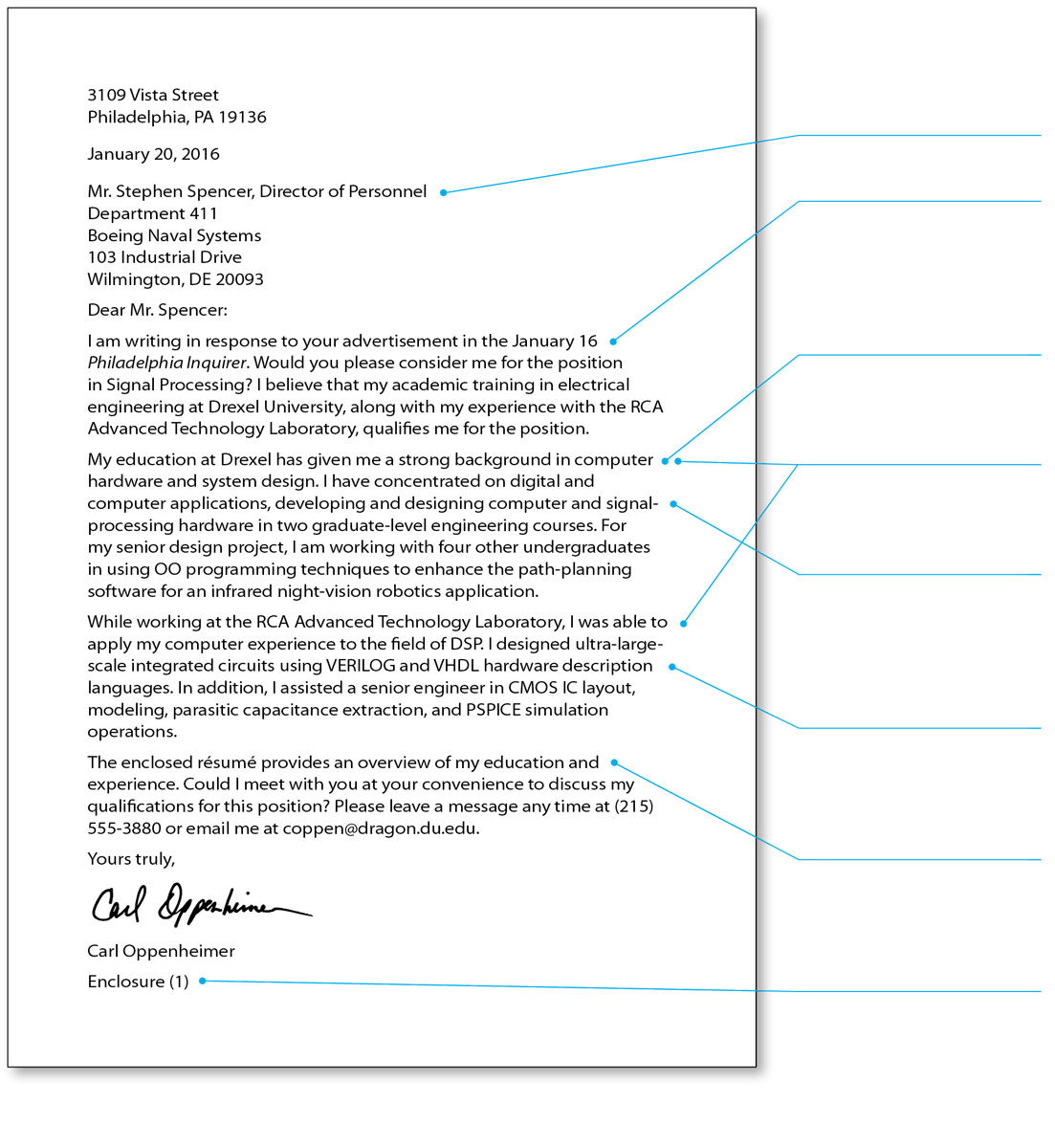Writing Job-Application Letters
Some experts argue that the job-application letter (sometimes called a cover letter) is obsolete, but opinions vary widely. The Society for Human Resources Management (SHRM) surveyed over 400 human-resources professionals and found that more than 40 percent consider a cover letter “important” or “very important.” Organizations with fewer than 500 employees in particular continue to value a cover letter (SHRM, 2014). Applicants can explain more clearly in a letter than in a résumé how their qualifications match the employer’s requirements. They can explain their professional relationship with someone in the employer’s organization or gaps in their employment history. Perhaps most important, applicants can show that they can write well.
Many of the job sites listed in “Understanding Four Major Ways To Look for a Position” include samples of job-application letters.
Figure 10.6 shows a job-application letter.

Notice that the writer’s own name does not appear at the top of his letter.
In the inside address, he uses the reader’s courtesy title, “Mr.”
The introductory paragraph identifies the writer’s source of information about the job, identifies the position he is applying for, states that he wishes to be considered, and forecasts the rest of the letter.
In a letter, you can’t discuss everything in the résumé. Rather, you select a few key points from the résumé to emphasize.
Note that both the education paragraph and the employment paragraph begin with a clear topic sentence.
The writer points out that he has taken two graduate courses, and he discusses his senior design project, which makes him look more like an engineer solving a problem than a recent graduate.
Notice how the writer makes a smooth transition from the discussion of his college education to the discussion of his internship experience.
A concluding paragraph usually includes a reference to the résumé, a polite but confident request for an interview, and the writer’s contact information.
The enclosure notation refers to the writer’s résumé. Do not use an enclosure notation unless you are literally enclosing something along with the letter in the envelope.